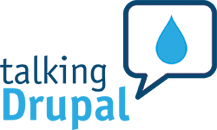Select a language
Navigate the site in your language of choice or contribute improvements to the translations so that Find It can better meet the needs of the diverse communities it serves.
I am very happy the bug is fixed and this blog post will be obsolete in mere days! Usually this sort of technical noodlings get relegated to our raw notes, currently hosted through GitLab, but figured at least a few other Drupal developers would want to know what has been going on with their toolbars.
Image credit: "Too Many Tabs" by John Markos O'Neill is licensed with CC BY-SA 2.0.

NICHQ Collaboratory
Making breakthrough improvements so children and families live healthier lives
Full participation in Agaric's Drupal 8 migrations quickstart (half-day training) and Drupal 8 content migrations (full-day training) courses requires a working, local installation of Drupal 8.
The morning can be done online with a Pantheon.io free development site or SimplyTest.me (only web browser and working internet connection required).
Development Environment
The afternoon portion of the training requires a local dev environment— if you aren't able to get this set up ahead of time, we can help you during a break. The two approaches we have tested:
- DrupalVM (requires VirtualBox and Vagrant)
- Alternatively and as a fallback, Drupal's quick start with PHP's built-in server
All of these approaches work on GNU/Linux, MacOS, and Windows.
Prerequisites
Although no prior Migrate module knowledge is required, it is expected that you have a basic understanding of nodes, content types, and fields. You can learn about these and other Drupal concepts by watching this session recording.
A working Drupal 8 installation is required. It is possible to follow some examples using a hosted Drupal service like pantheon.io To get the most out of the training a local installation is needed. Installing Drupal locally using composer is recommended.
Drush needs to be installed in order to run migrations from the command line. Xdebug and PHPStorm are used for the debugging example (techniques apply for other debuggers and IDEs).
It is recommended to use DrupalVM and configure it to use the drupal composer template.
Follow the quickstart guide to install DrupalVM with the xdebug extra package.
Install the following contrib modules:
- address
- entity_reference_revisions
- migrate_plus
- migrate_source_csv
- migrate_tools
- paragraphs
Assistance can be provided before the training starts, but it is better to come with your local environment already set up.
About the trainers:
Agaric builds websites and online platforms that give people more control over their technology, including working with Drupal for more than thirteen years. They bring their expertise in backend development and Drupal migrations to projects for clients in different sectors including government, education, businesses, and not-for-profits/NGOs. Agaric is committed to giving back to the community. Over the last few years, they have presented 40+ sessions and full day trainings in 16+ DrupalCamps and DrupalCons in the Americas and Europe.
Benjamin Melançon (mlncn on drupal.org) has been working with Drupal since 2005. He led the 36 author project that produced the Definitive Guide to Drupal 7 and contributed dozens of modules to Drupal 5, 6, 7, and 8. For client projects, Benjamin uses this deep understanding of Drupal internals along with more general frontend, backend, and infrastructure knowledge to make sure requirements and expectations are met. He is a frequent speaker at Drupal and other technology events in North America.
Mauricio Dinarte is passionate about teaching. He is creating educational material in English, Spanish, and French to help break the language barrier when learning Drupal and other technologies. Check out his educational project at https://understanddrupal.com.
350.org is a global climate justice organization that helped organize the largest climate strike in history. Together we improved their Climate Justice Action Map (CJAM) in the lead up to the strike so that activists could better mobilize their communities.
Monday night before the "Super Tuesday" primary, I'm searching for "does the bernie sanders app help you offer rides to polls to people" and finding no answer. (It does not.)
All I found was Lyft offering ride codes to for a handful of non-partisan non-profits to distribute. If Lyft can realize that simple physical access to vote is a barrier that affects different groups of people unequally and cite the facts about youth not voting, it surely came up on the Bernie Sanders Slack.
Yet in this highly online-connected campaign, some of the basic steps to winning (asking everyone: Do you have a plan to vote? Do you need help getting to the polls?) didn't make it into the official app, nor in any public side efforts.
There are a huge number of thoughtful, dedicated people working on the Bernie Sanders campaign (and in other political campaigns), but as in every movement I've witnessed I'm convinced that not all the best ideas are bubbling up. This is especially true for communities like Drupal where even the idea of shared goals, let alone the mechanism for identifying and realizing them, can seem to disappear when you look for them directly.
Even when a goal is simple (get this one person elected president) the tactics are likely to need to be varied and complex.
This is vastly more true when we're talking about a movement. Even in a presidential campaign like for Sanders, the the goals behind the goal—health care, living wages, lots more jobs for everyone because we're putting people to work reversing global warming—are many, multifaceted, and cannot possibly be achieved only through electing someone, even to an office like the United State's imperial presidency.
After getting over my personal hangup of asking people for something without having at least the barest offer of help (a ride to go vote), I did start texting a few people to encourage them to vote. But as I texted my brother in New York, I'm still bummed we're organizing in the context of political campaigns, instead of having huge movements that, as an afterthought, choose our politicians.
I'm not making (or necessarily opposing) the argument that electoral organizing distracts from more important grassroots organizing.
I have gotten involved with a local solidarity network which focuses on direct action to help people with immediate problems— frequently a dozen people helping just one person or a few people at a time win livable spaces from landlords (or get security deposits back), or get stolen wages from an employer.
This sort of deep organizing—really only medium deep, but it's using available resources to nearly their maximum capacity—does not have the breadth of the typical mayoral campaign.
We need breadth as well as depth. There are many problems that can't be solved on a case by case basis. Although the type of organizing local solidarity networks engage in builds the capacity to take on bigger problems, it doesn't necessarily scale fast enough, or have clear mechanisms to translate built power and solidarity in one area to others.
The question of translating power built in one sphere to another is even more pressing for the election campaigns.
It's no secret, as Frank Chapman of the National Alliance Against Racist and Political Repression reminded people in Minneapolis when he visited from Chicago, that you build political power by going door to door and finding supporters.
What would our political movements be able to do if we didn't have to redo all the grunt work every time?
Or if people weren't canvassed only by campaigns (electoral or otherwise), but asked about their needs?
There are enough people who give a damn.
We could build immensely powerful movements from the ground up, if we had a way to agree how shared resources of movements—including communication channels—would be controlled.
To be a movement for, among other things, democracy, we need to be democratic ourselves. The DSA is probably farthest along in reach and democratic mechanisms, and so a natural place to join.
We need better technology to coordinate to achieve justice, liberty, and better lives for all. I don't mean merely a better canvassing app.
We need approaches and tools that let us share power. Then we can truly build power together.
A positive spin on this extremely spun election: media coverage has meant a ton but advertising has not. And the national, corporate media (which, if for instance you haven't checked who owns your local newspaper, if you even have one, is nearly all of the news media) is the sworn enemy to economic fairness and equal political power. No one with resources should put a cent into our enemies pockets by buying ads, especially when it doesn't even work.
It's a perfect opportunity to build institutions that work for us, rather than pouring resources and energy into institutions that are getting us killed.
We can build a communication network through which we collectively decide what we want, and then figure out how to coordinate to get it— whether it's electing someone or holding politicians or businesses accountable with direct action or forming ourselves into a giant cooperative corporation to negotiate as workers and buyers more equally with the huge corporations we deal with on a day-to-day basis.
If you're in the position to connect us to campaigns, cooperatives, parties, or other organizations who see a need for communication tools controlled by all the people in an organization or movement, where the ideas and control of resources can build from below, please contact Agaric.
At Agaric, we perform a lot of Drupal upgrades. These very often involve transitioning away from older versions of PHP. Even when your hosting service provides multiple versions of PHP, you can still run into issues activating the appropriate one for each site: whether that's within the web server, at the command line, or via Drush (or other tools). In this blog post, we'll be providing remedies for all of these cases. Most content applies to any PHP application.
Notas:
Diapositivas - https://github.com/fiqus/FIT-talk-en
## FACTTIC - Federación Argentina de Cooperativas de Trabajo de Tecnología, Innovación y Conocimiento
* Lista de correo sólo para miembros
* Mattermost (chat de código abierto)
* Reunión mensual de la junta virtual (cualquier miembro puede asistir)
* Reuniones anuales cara a cara
## FIT
* Un proyecto dentro de FACTTIC donde las cooperativas comparten el estado de los proyectos en los que están trabajando
* Evolucionado a un área donde las cooperativas comparten proyectos
* Para unirse a la FIT, tienes que ser un miembro FACTTIC
* Reuniones virtuales mensuales
* Canal Mattermost para el diálogo en curso
* Las cooperativas tienen diferentes habilidades/servicios, pero cuando hay superposición, trata de no competir entre sí y determina las "necesidades" de cada cooperativa.
### Escenario 1: El proyecto demanda más trabajadores de los que tiene la cooperativa
* Cuando hay una necesidad de ayuda, el proyecto se comparte en FIT
* Las cooperativas pueden solicitar unirse al proyecto
* Los candidatos son evaluados y uno es elegido
* El cliente es informado y debe estar de acuerdo
* La coordinación del proyecto está dirigida por la cooperativa inicial
* El acuerdo comercial es manejado sólo por la cooperativa inicial
### Escenario 2: El cliente necesita que se haga el trabajo, pero Coop decide no tomarlo
* Esto podría suceder porque la cooperativa inicial no tiene los recursos o declina por una razón estratégica
* El proyecto se comparte con la FIT
* Si no hay cooperativas interesadas, se le dice al cliente que no hay nadie disponible.
* Si una cooperativa está interesada, el contacto de esa cooperativa se comparte con el cliente.
* Si más de una cooperativa está interesada, entonces preguntamos, ¿este proyecto requiere más de un trabajador?
* Si sólo necesita un trabajador, entonces la cooperativa que más lo necesita lo recibe.
* Si requiere más de un trabajador, entonces las cooperativas se coordinan entre sí para completar el trabajo.
## Case Studies
### Betterez
* Cliente canadiense
* Plataforma de gestión de reservas y billetes
* Tecnologías: MongoDB, NodeJS, VueJS y Elixir
* Necesitaba más trabajo del que Fiqus podía proporcionar
* 30 desarrolladores con 7 cooperativas diferentes
* Fiqus maneja las cuestiones financieras como las diferentes tarifas de los diferentes servicios
### Receptivi
* Cliente canadiense
* La página web muestra en tiempo real las percepciones psicológicas del personal
* Tenía más trabajo, pero Fiqus se negó a asumir el trabajo
* El trabajo se compartió en la FIT
* 3 desarrolladores de 2 cooperativas
### Mall Plaza
* Cliente chileno
* Aplicación móvil que muestra los servicios del centro comercial
*Técnica: Reaccionar Nativo, PostgreSQL, Frasco
## Onapsis
* Cliente argentino
* Sistema web que muestra alertas de vulnerabilidad en los servidores
* 2 cooperativas
## FIT Internacional
* Queremos replicar este modelo a nivel internacional.
1. Compartir este modelo con otros a fin de mejorarlo y difundir la conciencia
* Presentando en el Show and Tell
2. Construir relaciones de confianza
3. Conocerse en persona, pasar tiempo juntos
* Viajando al Reino Unido, reunión con la federación, COTECH
* Compartir experiencias después del viaje
## Preguntas y respuestas:
P: ¿Alguna vez ha tenido la resistencia de un cliente al entregar el trabajo a otra cooperativa?
R: Hay veces que los clientes no entienden las cooperativas y la cooperación entre ellas. Explicamos el beneficio y compartimos estudios de casos. Si hay una fecha límite que debe cumplirse, es más rápido traer un equipo con experiencia previa trabajando con la empresa original que tratar de encontrar una empresa completamente diferente.
P: ¿Cuánto comparten acerca de las múltiples cooperativas que trabajan en un proyecto?
R: Si son sólo unas pocas horas, no vale la pena hablar de ello. Sin embargo, la mayoría de las veces es importante compartir esa información y usarla como una oportunidad educativa para demostrar la fuerza de las cooperativas trabajando juntas.
* Una vez que los clientes ven el resultado de la cooperación se dan cuenta de que es una buena manera de enfocar el trabajo.
* La simplicidad del proceso es hermosa.
P: ¿Cómo se comparten los costos de desarrollo de los negocios?
R: La cooperativa que comparte el proyecto puede bajar sus tarifas durante el proceso de aceleración.
* Este es un aspecto que podría mejorarse.
* Lo más importante es ser transparente y comunicar mucho.
* Mantener el espíritu de generosidad fluyendo.
* Cuando la cooperación es exitosa, se construye la confianza con el cliente.
* Usar una herramienta para analizar los presupuestos y el progreso de los proyectos y prever la disponibilidad.
* La cooperación también asegura la calidad, los trabajadores de confianza se unirán al proyecto.
Micky is a highly active and dedicated individual who is deeply involved in various movements and networks related to free software, cooperative business models, and community building. She is a worker/owner of Agaric, a member of numerous "free software" networks and movements, and actively uses tools like BigBlueButton, Drupal, and the GNU/Linux operating system to promote and introduce people to the world of free software.
Micky plays a crucial role in connecting different organizations and networks and she serves on the board of May First Movement Technology (MFMT), The US Solidarity Economy Network (SEN) and, SnowDrift.coop. As a member of The Tech Workers Peer Network a coalition of the US Federation of Worker Cooperatives (USFWC), she works to foster ongoing dialogues and collaborations in building a new economy network rooted in community-based, shared ownership. She also works with organizations like, Platform Cooperativism Consortium, The Free Software Foundation, The Center for Global Justice, The Greater Boston Chamber of Cooperatives, Restore the Fourth, and MassMesh, among others, to raise awareness about free software, cooperative business models, privacy protection, plus local and global opportunities to share knowledge. She has been a Keynote speaker, lecturer and panel member at conferences over the past 20 years.
As a member of the May First Movement Technology board, Micky actively collaborates with technical activists to provide people with the necessary information and tools to transition from being a local or small global network to becoming part of a global movement based on solidarity and cooperative principles. She strongly believes that the workers' economy requires free software tools to protect our freedoms, and she combines the principles of free software liberation and cooperative development in her presentations and talks.
Micky is also an active member of the Drupal community, an international group centered around a free software content management system. She has contributed to the Drupal community as a writer and has shared her experiences as a contributing author in the book "Ours to Hack and to Own," which is considered the handbook for the Platform Cooperativism Movement. The book was initiated by Trebor Scholz and Nathan Schneider at the New School in NYC and was listed as one of the top tech books of 2017 by Wired magazine.
As a public speaker, Micky passionately delivers the message of cooperative software development to various networks and movements. Her presentations cover a wide range of topics, including free software, cooperative tech development, personal digital privacy, worker-owned cooperatives, artificial intelligence, surveillance and capitalism, introduction to web technology, and the incorporation of the seven cooperative principles using Sociocracy, into work and living environments. Additionally, she provides software training for free tools such as BigBlueButton, Signal Instant Messenger, NextCloud, and encrypted email, and she can offer advice on alternatives to proprietary software.
Outside of her professional endeavors, Micky has a rich personal history. She was a resident of Weston, CT in the 50s, 60s, and 70s and currently resides in Boston, MA with her long-time partner John M. Crisman. Micky was a member of a few bands in Boston, MA during the 1970’s through the 90’s, such as The Phantoms. The band is featured in the book "Hit Girls" by Jen B. Larsen, a compendium of female-led punk bands in the USA during the late 70s and early 80s as well as an exhibit at Harvard's Loeb Music Library in 2024-2025.
Micky's dedication to her work and her commitment to promoting free software, cooperative business models, art, music and community building make her a valuable asset to the movements and networks she is involved in. She continues to make a positive impact in the world through her activism, public speaking engagements, and the creation of site like CommunityBridge, which prioritize privacy and provide a more secure environment for meaningful video chats between individuals who share a passion for education and activism.
Here is a trailer for a video documentary about Micky's High School days - It is Rock and Roll History - The High School that ROCKED.
Request an interview, presentation or workshop with Micky
Presentations and Workshops:
*Updated list and references available upon request.
2021
- Live interview - Sweden CivicTech Lab - The Two Money Problems
2020
- Hosted workshop: Surveillance Capitalism, Predictive Analysis and YOU at HOPE 2020 (Hackers on Planet Earth)
- Live interview on Radio Statler at the HOPE 2020 conference
- Libreplanet LIVE online 3/14/2020. We hosted a discussion at 4:20 ET on fsf.org - Libreplanet 2020
- Surveillance Capitalism, Predictive Analysis and YOU - Lecture, Biblioteque, San Miguel de Allende
- Internet Security - Workshops - Biblioteque, San Miguel de Allende
- Boston College - presentation on AI and Predictive analysis
- Colorado.edu online interview on Cooperative development and Agaric values
2019
- Platform Cooperativism 2019 - Who Owns the World? - New School, NYC
- BADcamp 2019 - San Francisco
- Mass Pirate Party - Ring Doorbell Surveillance
- Keynote - LibrePlanet 2019 - M.I.T.
- Micky's Resource Links from LibrePlanet Keynote
- Keynote - NERDsummit - UMASS Amherst
- UjimaBoston
- Series of four workshops on Free Software and Platform Cooperativism in January 2019
- Chris and Micky present at Boston College on AI and Free Software
- Micky and Ben present at DrupalCon Seattle on Scaling Community Decision Making
2018
- 3rd Regional Workers Encuentro
- "Communications & the Workers' Economy" (workshop) Mexico City CDMX
- Center for Global Justice Assembly
- "Securing your devices and using free software" (workshop) San Miguel de Allende, Mexico
- LibrePlanet 2018
- Connecting communities with schools and free tools (workshop) M.I.T. Boston, MA USA, Facilitators: Micky Metts, Chris Thompson
- New Economy Coalition's CommonBound - St. Louis, MO USA
- Technology for the New Economy
2017
- Open.coop 2017 - London University, London, UK
- Panel: Empowering digital collaboration: Introducing the open app ecosystem
- Workshop: Designing interoperable apps for the open app ecosystem
(Technically, there is one formatter each for text lists and for entity references, but all the options which In Other Words adds are the same for both.)
We can configure a separator between list items, a final join word, and whether to connect the final items with a comma (or semicolon or any other punctuation we can imagine for our list).
In all its glory in context:
Get notified of trainings
Learn when we have new opportunities for learning (two to four announcements a year).
Learning Objectives
- Understanding the ETL process
- Writing your first migration from a CSV file
- YAML syntax and migration errors
- Introduction to process plugins
- Understanding migration workflows
- Migrating data into nodes and files
- Migration syntax for multivalue fields
- Migrating dates and times
- Migrating addresses and validation considerations
- Migrating taxonomy terms with entity_generate plugin
- Source constants, pseudofields, and the process pipeline
- Migration dependencies
- Introduction to paragraph migrations
- Migrating from JSON endpoints
- Defining migrations as configuration entities
- Running migrations from the user interface
Prerequisites
Although no prior Migrate module knowledge is required, it is expected that you have a basic understanding of nodes, content types, and fields. We offer a getting started with Drupal training that covers all that is needed to take this course.
Setup instructions
Installing Drupal or 11 locally using composer is required. You can use the quick-start command that comes with Drupal core. Alternatively, you can use a tool like DrupalVM, Lando, DDEV, or Docksal. Drush needs to be installed in order to run migrations from the command line. You can learn more about the prerequisites for the training visiting https://agaric.coop/migration-training-resources
This training will be provided over Zoom. You can ask questions via text chat or audio. Sharing your screen, but you might want to do it to get assistance on a specific issue. Sharing your camera is optional.
What to expect

Prior to the training
Attendees will receive detailed instructions on how to setup their development environment. In addition, they will be able to join a support video call days before the training event to make the the local development environment is ready. This prevents losing time fixing problems with environment set up during the training.
On the days of the training
- The training totals 7 hours of instruction, which we usually split into 2 sessions.
- A team of developers available to answer questions and help with training-related issues.
After the training
- Attendees will receive copies of the training recordings.
- Attendees will receive a free copy of the 31 days of migrations book.
- Attendees will receive a certificate of completion.

As it was for much of the world, 2018 was a combination of extremes for Agaric and the free and open web. Happily, we expanded our team, launched new sites, and empowered our clients through libre software. Unhappily, many of us and our communities endured health issues, political instability, and the effects of climate change.
For the open web, we disappointedly saw the United States officially end Net Neutrality while we excitedly watched the European Union begin enforcing comprehensive privacy laws with its General Data Protection Regulation. We were disgusted by tech giants like Facebook and Palantir diverting and deflecting from the abuses they carry out, but we were also inspired by workers at companies like Amazon and Google forcing their bosses to do better.
In looking back, we celebrate the victories and learn from the challenges—with our eyes set on serving our clients better, expanding the open web, and building an economy based on solidarity rather than exploitation.
To that end, here are the highlights of our work from last year and our intentions for the new year.
Pagination
- Previous page
- Page 13

